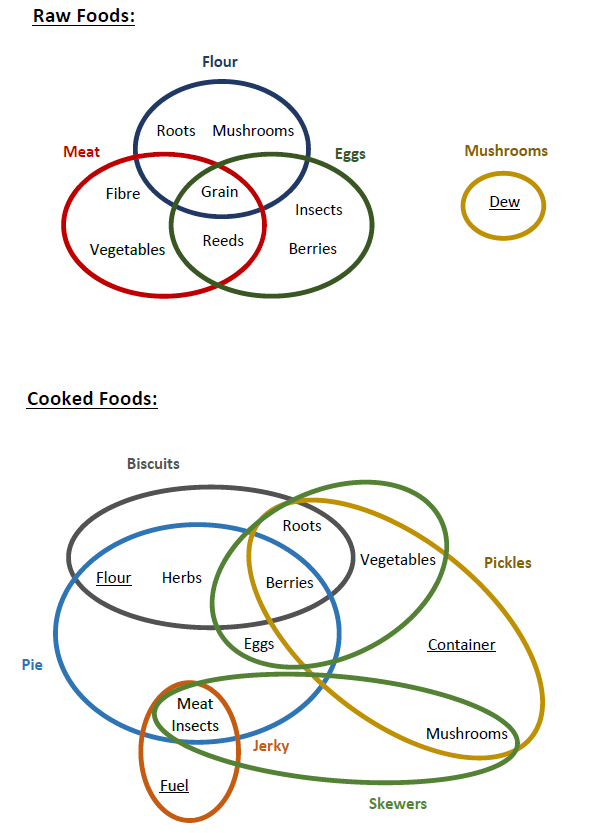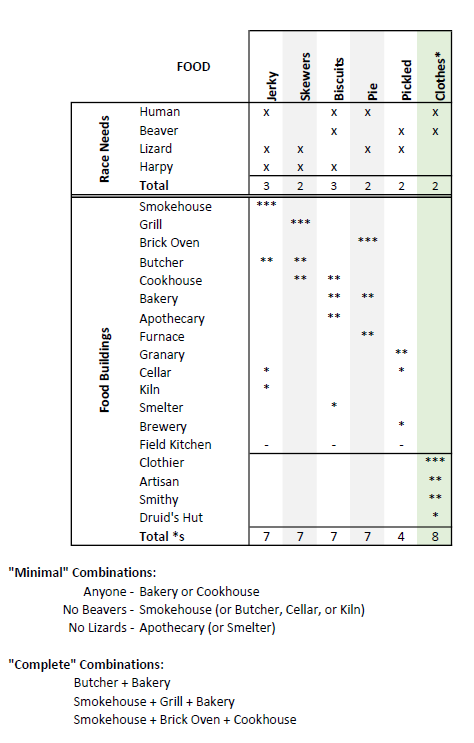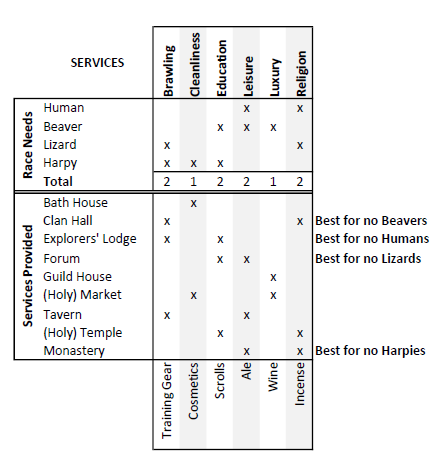Welcome to our Against the Storm Food and Services Guide. Couple of tables showing what races have what needs (foods and services), which buildings can satisfy them in which combinations, and recommendations as to which set will satisfy the most as easily as possible.
We know that there are people who have a hard time finishing the Against the Storm game. If you are one of those who find it difficult to finish the game, let’s take you to our Against the Storm guide.
Against the Storm Food and Services Guide
Three complimentary charts that help navigate the complicated production chains in Against The Storm. The first is a Venn diagram of the ingredients for all the food-related recipes. If you’re confused as to whether mushrooms can go in pie or whether you can put vegetables in a skewer, it should clarify that with the blink of an eye. The others are a couple of tables showing what races have what needs (foods and services), which buildings can satisfy them in which combinations, and recommendations as to which set will satisfy the most as easily as possible.
Food Ingredients
This is a Venn diagram of which food ingredients go into what food recipes. It’s separated between “raw” food at the top and “cooked” (resolve giving) food at the bottom to prevent overwhelming clutter.

To make a recipe you need the underlined ingredient (if there is one) AND *one* of the other ingredients in the circle of the same colour. Skewers have two circles and you need one ingredient from each. Note that jerky is inside the lower skewer circle because it is an ingredient for it; and that meat, eggs and mushrooms can be harvested directly from certain nodes without being produced by the ranch or greenhouse in the way shown. Container means pot/barrel/waterskin and fuel is wood/coal/oil/marrow. The production chain for those isn’t included to prevent the diagram from spiralling out of control.
Against the Storm Food Needs

This table cross references the different cooked food each race receives resolve for, with the buildings that can make those foods, and the efficiency (0 stars to 3) at which they do so. Clothes are also included as they function in a very similar way (except not contributing to not starving).
The minimal combinations at the bottom are the sets of the fewest buildings such you can produce at least 1 of the desired cook foods for each race present. The complete combinations are such that they together produce all the cooked foods. Note that pickled food is omitted from this because the buildings that produce it have no overlap with the others.
Generally speaking, pickled food is to be avoided at the start as it has lower star recipes, asked for by few species, and requires the difficult to produce barrels/pots/waterskins. It does, however, give more resolve than the other foods. On the other hand, jerky is often very easy to make in large quantities from multiple different buildings and is liked by everyone but Beavers. As each settlement is different, with different blueprints available and resource nodes found, what is best in practice can vary wildly from these general guidelines.
Service Needs

This table cross references the different races’ service requirements with the buildings that provide that provide those services.
As any settlement will have (bar some very rare exceptions) 3 different races, it is often useful to know which service building will satisfy the most requirements. The ones listed will, for that combination of races, fulfil 2 requirements of one race and 1 for the remaining two; the best that can be done with a single service building.
Whether it’s actually “the best” depends on how many of each race you have, if you care about the resolve of some more than others, and which goods you can actually supply to it. The bonus impact of fully staffing the building is also not to be ignored. If you plan to build, staff, and supply multiple service buildings, then all bets are off. Take this as a suggestion of which buildings to first consider rather than a cast iron rule of what to build.